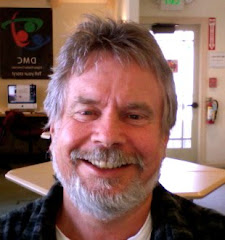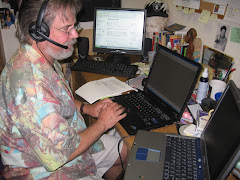To begin with, I do like the word "verisimilitude" - how many words with that number of syllables roll so easily off the tongue? Plus, it always reminds me of that great line in the Mikado when one of the characters (Ko-Ko?), accused of embellishing his account of recent incidents, retorts that he is providing "merely corroborative detail to add dramatic verisimilitude to an otherwise bald and unconvincing narrative." Something like that.
Well, there are certainly bald and unconvincing on-line courses to be found in the great digital neighbourhood in which I am trying to settle down. We are busily adding verisimilitude of the Ko-Ko variety with fascinating video and audio clips, a multitude of helpful links, fun items created with the help of the good people at Hot Potatoes, and so forth. But we also aspire to authenticity, which raises the bar and a number of questions, most crucially what does it mean to be real in creating and conducting an on-line course?
Which leads me to a second cartoon from that same New Yorker, this time on page 68, by Mankoff. A doctor, earnest and bespectacled and backed by a large framed diploma, looks across his desk and addresses a nervous patient. "Well, yes, it's a routine procedure - if you routinely have someone slice open your body with sharp instruments and then fiddle with your insides." The humour, to state the obvious, comes from switching the concept of "routine" from the doctor to the patient. In my case, the switch has verisimilitude: in the classroom, I perform routine procedures; sure, I keep up with new ideas and incorporate new techniques, but most of what I do I have done many times before. In contrast, this will be my first on-line course: not routine. For some students, it will also be their first: again not routine. For others, it may be their third or fifth: becoming routine. For others, their tenth or twelfth: routine.
My experience with instructional and learning processes, though, teaches me this: preparation and planning may become routine, but the interaction in the classroom around the material is rarely so. Internal organs, I have learned from Grey's Anatomy, may occasionally spring surprises but are generally more predictable than learners working together. I assume that the same will apply to moodling: preparing an on-line course may one day become routine (as it presumably is for Bob and Leo, the Moodle Brothers), but the interaction among the learning community will not.
I therefore propose that we are aiming for verisimilitude in the course design by remaining faithful to the core material, to the truth of our own experiences, to basic precepts such as the Monterey Way. Authenticity will only come when the participants genuinely and honestly interact around the material, throw themselves into the tasks without reserve and reflect with depth on their own needs, purposes, interests and experiences. The artifice of the Moodle, of the internet itself, will be overcome by the Colbertian truthiness of the participation; verisimilitude will become authenticty.






No comments:
Post a Comment